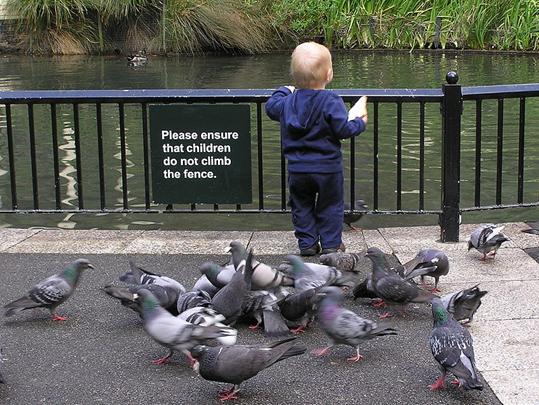How To Child-Proof Your Home To Avoid Common Accidents

When your child is first born, its hard work but at least when you put your baby in their cot, you know they are going to stay there. As soon as they unleash the power of their legs and arms, it’s harder to keep track of them and this is why you need to start thinking about child-proofing your house.

Image by Tony Wills
Your child will be moving around the house on their own two feet for the first time and they are bound to be curious about the huge and exciting world of your house. The key to being a parent of a toddler is to let them explore but keep them well supervised and your home child-proofed.
Here is a room by room guide to making your house a safe and child-friendly environment.
The kitchen can be a dangerous place, even for adults sometimes! There are many hazards in the kitchen that are unavoidable, like the oven for example. However, there are ways in which you can make your kitchen safer for little one.
Make sure all cupboard doors are on a latch, as exploring toddlers love to pull on doors. Also, keep all cleaning substances, knifes, plastic bags and glass crockery locked away or high up.
While cooking in the kitchen, make sure you turn all saucepan handles inwards as these can easily be knocked off and keep all hot drinks away from the edges. Once you get into this way thinking, it will come automatically.
It is recommended that you get an oven guard for your oven door and cover the hob controls, so that they are unreachable by exploring fingers.
Keep the floor clean and dry so that your little one can’t slip up. If you are mopping the floor, make sure that you don’t leave out the bucket of water unattended.
If there is no one in the kitchen, keep the door shut and never leave your child in the kitchen unsupervised.
There are only a few hazards to consider in the bedroom but as this is where your child sleeps, getting it right is very important.
Make sure you use a bed guard for their sleeping area so that if they were to fall, it would be on a soft surface.
Also, as cosy as it might sound, don’t surround your child with too many blankets and cushions, as this can cause suffocation.
The living room is an exciting place for any toddler because it is full of stuff to play with. This is why the first thing on your ‘living room to-do list’ is to tidy. Keep the floors clear and the surfaces as free as possible.
Once you’ve de-cluttered the room, begin by hiding the TV remote controls and any breakable ornaments.
The living room is alive with electrical appliances so the next step is to think about how to make this safe for your child. Put safety plugs on all unused sockets and keep floor lamps behind furniture so that they can’t be pulled over.
Move any plants out of reach because not only are they in danger of being pulled over, but also of being eaten!
Attach corner and edge guards to any furniture that sticks out and if you have a fire, always make sure you use your fireguard.
Open drawers can become like a ladder in the mind of a toddler, so always ensure you keep them shut. As well as this, any low windows should remain shut.
Another thing to consider is curtains. Make sure your curtain cord is a tassel rather than a loop, as looped curtain cord can very dangerous if a child gets caught in it.
For the dining room, there are just two main things to remember. Firstly, try to keep table cloths tucked in, so that they are out of grabbing toddler’s reach.
And secondly, tuck the chairs into the table fully, so that your dining table doesn’t become an indoor climbing frame.
The bathroom is another dangerous area for toddlers, so never leave a young child alone in this room and keep the door shut.
Remember to keep all your medicines, razors, pins, mouthwash, cosmetics, perfume, nail polish and remover, scissors and other dangerous objects out of reach.
Also, using a non-slip bath mat should reduce the risk of any falls in the bath. As well as this, it is always good to get into the habit of keeping the toilet seat closed and emptying the bath straight after use. This ensures that any risky areas are hidden or covered.
Hopefully all this advice gives you plenty of ideas on how to make your home child-friendly. Remember that it’s your responsibility to keep your child safe at home. There are many things that you can’t control and that is where accident claimscome in, but for basic home safety, it’s down to you.
Do you have any great tips for making your home a safer place for children?
License: Creative Commons
image source
Estelle Page is an interior designer who’s currently renovating the home she shares with her husband and two kids. You’ll often find her checking for inspiration at a National Trust home or flicking through the latest copy of Better Homes and Gardens. She writes for The Accident Specialists.
